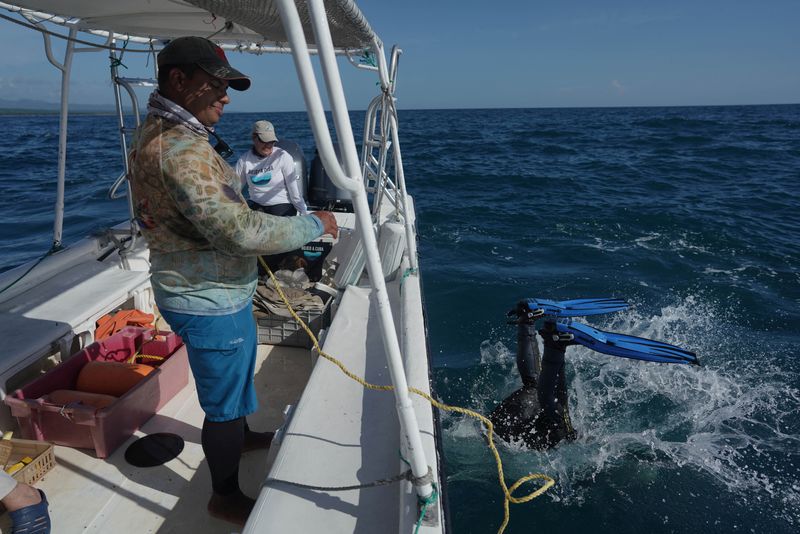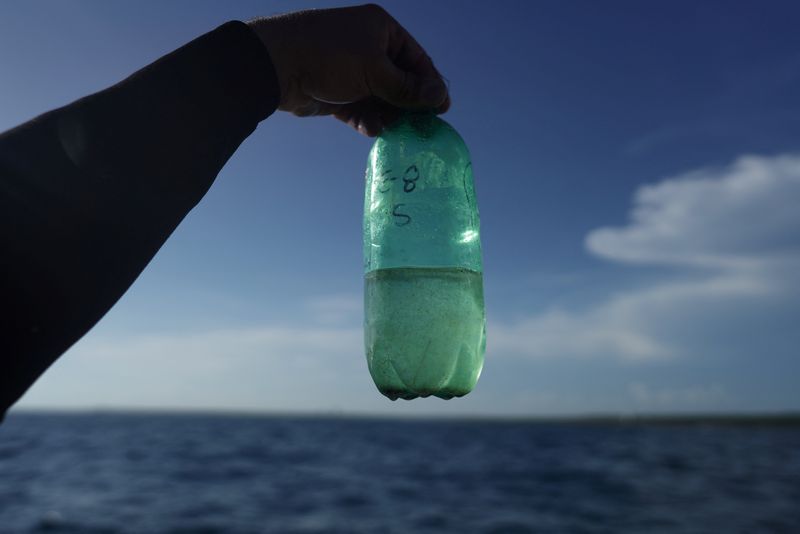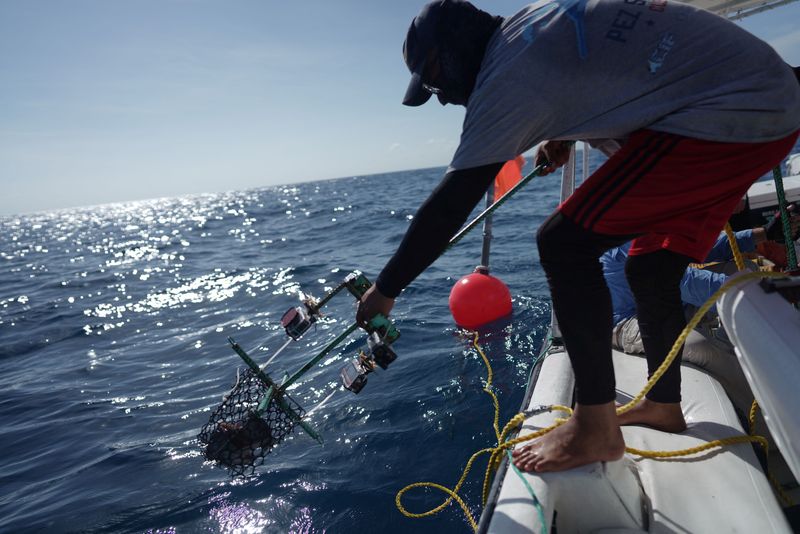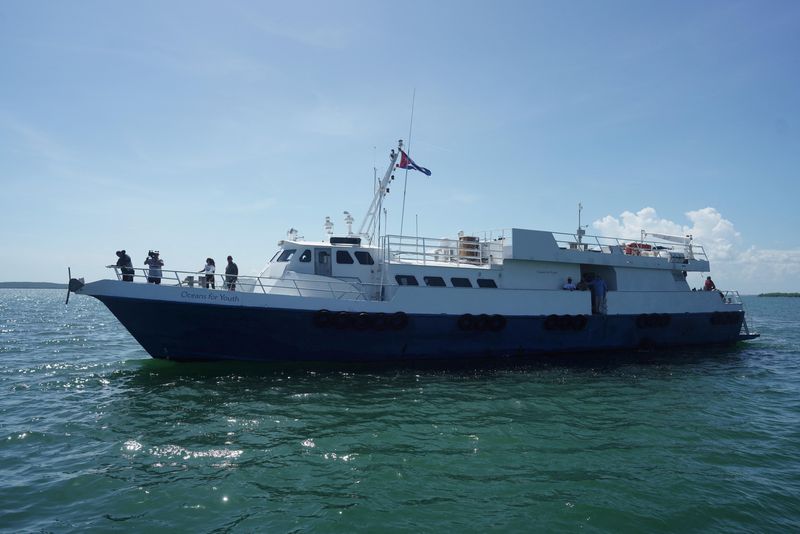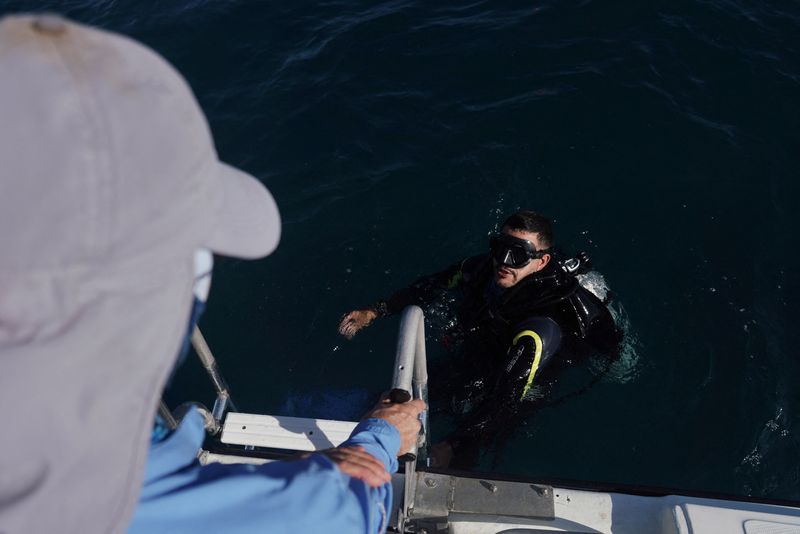By Dave Sherwood and Alien Fernandez
CIENFUEGOS, Cuba (Reuters) – Cuban marine biologist Ariandy Gonzalez emerges uneasy from the sun-speckled Caribbean sea off a remote stretch of Cuba’s south coast. Something is not right.
The sea floor, once a mosaic of colorful corals, is now marred by patchy white splotches. That is evidence of heat-related coral bleaching, where stressed corals expel their colorful algae symbionts, leaving them pale and vulnerable.
“I think this is the worst bleaching we’ve seen yet,” Gonzalez told five fellow scientists, hoisting himself into a small diveboat that heaved in churning seas.
Gonzalez is among 18 scientists and crew members who for nearly two months have circumnavigated Cuba in the M/V Oceans for Youth ship to hunt for clues that could help researchers across the globe protect reefs in the face of warming waters, over-fishing, pollution and other threats.
The ongoing “Bojeo a Cuba” study is a snapshot in time of the health of Cuba’s reef, fish and sea life, the first of its kind across such a large area of the island’s waters, said Dr. Fabian Pina, a Cuban marine biologist and expedition co-leader who initiated the project nearly two years ago.
The project has received funding from the Cuban government and international partners, Pina said.
Preliminary observations – the voyage is still about a week from completion – suggest both good and bad news, the scientists told Reuters in interviews at sea.
The water here, off the island’s little developed south-central coast, is a sweltering 90F (32°C), and elsewhere even warmer, the scientists said.
Sea surface temperatures globally have broken records this year. In Florida, just 90 miles (145 km) from Cuba, temperatures soared to hot tub levels, prompting U.S. scientists to warn of the potential for catastrophic bleaching.
Pina said the expedition’s scientists were also disappointed to find few larger specimens of fish like grouper, snapper and sharks even on Cuban reefs that appeared otherwise healthy.
Communist-run Cuba, which faces ongoing food shortages, has struggled to regulate its fisheries, leading to declines in many species and the 2019 passage of a law to bring order to its fishing industry.
But Pina said there was plenty of good news, too.
“We are finding natural wonders almost everywhere we go,” the biologist said, noting that many of Cuba’s keys and mangrove forests are far more intact than in Florida and some Caribbean neighbors.
That could give Cuba’s reefs, some of which are thought by scientists to be among the world’s most pristine and resilient, an advantage in a changing climate.
“It’s still an open question,” Pina said. “But the expedition now provides a baseline, so we can come back and check on these reefs and see, for example, if they have recovered from the bleaching they are experiencing.”
GLIMMERS OF HOPE
The team faced challenges – scarce internet, intense heat and a hurricane at sea – but also, glimmers of hope along the 3,541-mile (5,700 km) circumnavigation of the island.
Expedition divers observed an unusually large school of exotically-colored triggerfish in eastern Cuba, and a kaleidoscope of vibrant corals along the ocean floor near the densely-developed tourist destination of Varadero.
And off Guanahacabibes national park in far western Cuba, scientists used camera traps to photograph big, ocean-going sharks, mostly absent across hundreds of miles of coastline the team had already traveled, said Dorka Cobian, an expedition biologist and a researcher at the park.
Cobian said she held hope that the peninsula’s reefs would bounce back from the recent bleaching, which she said had affected 60-80% of corals in the area.
“This reef is very resilient,” she said. “We’ve suffered many bleaching events, and in general, they have recovered.”
Expedition leader Pina said it was still too early to draw anything but preliminary conclusions from the reams of data, video footage and observations collected by the team.
But the biggest lesson was already lying in plain sight, he said.
“Our ecosystems are in general well conserved,” he said, struggling to choose a favorite site among so much splendor. “We must find a way to take advantage of the enormous opportunity that provides.”
(Reporting by Dave Sherwood and Alien Fernandez, additional reporting by Mario Fuentes, Alexandre Meneghini; Editing by Rosalba O’Brien)

